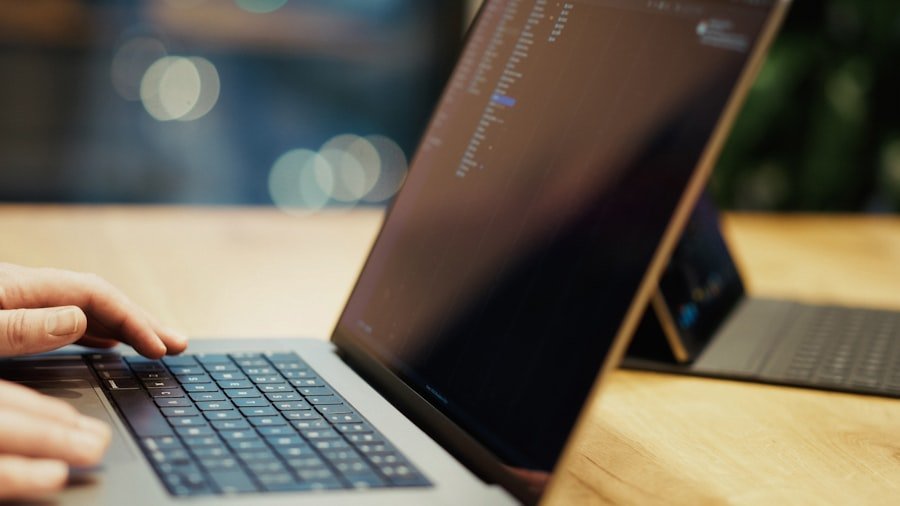In an increasingly interconnected world, the ability to share photos seamlessly across different platforms is essential. The iPhone and Android devices represent two of the most popular operating systems globally, each with its unique features and user experiences. However, when it comes to sharing photos between these two ecosystems, users often encounter challenges due to differences in file formats, messaging protocols, and app compatibilities.
Understanding the various methods available for transferring images can significantly enhance the user experience and ensure that cherished memories are easily shared, regardless of the device being used. The process of sending photos from an iPhone to an Android device can be straightforward if one is familiar with the available options. From utilizing messaging applications to leveraging cloud storage services, there are multiple avenues to explore.
Each method has its advantages and potential drawbacks, depending on factors such as file size, internet connectivity, and user preferences. This article will delve into several effective techniques for transferring photos from an iPhone to an Android device, providing detailed insights into each method’s functionality and practicality.
Key Takeaways
- Sending photos from iPhone to Android can be done through various methods such as messaging apps, email, cloud storage services, Bluetooth, third-party apps, and AirDrop.
- Messaging apps like WhatsApp, Facebook Messenger, and iMessage can be used to easily send photos from iPhone to Android, but the recipient must also have the same app installed.
- Email is a convenient way to send photos from iPhone to Android, but there may be file size limitations and the recipient may need to download the photos to view them.
- Cloud storage services like Google Drive, Dropbox, and iCloud can be used to share photos between iPhone and Android by uploading the photos to the cloud and sharing the link with the recipient.
- Bluetooth can be used to transfer photos from iPhone to Android, but it may be slower and limited by the range of the devices. Third-party apps like PhotoSync and Send Anywhere can also be used for photo transfer between the two devices.
- AirDrop is a quick and easy way to share photos from iPhone to iPhone, but it is not compatible with Android devices. In conclusion, there are multiple options available for sending photos from iPhone to Android, and the best method will depend on the specific needs and preferences of the user.
Using Messaging Apps to Send Photos
One of the most convenient ways to send photos from an iPhone to an Android device is through messaging applications. Popular platforms like WhatsApp, Facebook Messenger, and Telegram allow users to share images quickly and efficiently. These apps typically support cross-platform functionality, meaning that users can send and receive messages and media files regardless of their device’s operating system.
For instance, if an iPhone user wants to share a photo with a friend who uses an Android phone, they can simply open their preferred messaging app, select the photo from their gallery, and send it directly. When using messaging apps, it is essential to consider the quality of the images being sent. Some applications may compress photos to save bandwidth or speed up the transfer process, which can result in a loss of image quality.
For users who prioritize high-resolution images, it may be beneficial to explore settings within the app that allow for sending original quality files or consider alternative methods for sharing larger images. Additionally, users should ensure that both parties have the app installed and are connected to the internet, as this is a prerequisite for successful photo sharing.
Using Email to Send Photos

Email remains a reliable method for sharing photos between devices, including iPhones and Android phones. By attaching images to an email, users can send high-quality files without worrying about compression issues that may arise in messaging apps. To send a photo via email from an iPhone, users can open their email application, create a new message, and attach the desired images from their photo library.
This method is particularly useful for sending multiple photos at once or larger files that may exceed the size limits imposed by messaging platforms. When using email to send photos, it is important to consider file size limitations set by email providers. Most email services impose a cap on attachment sizes—typically around 25 MB for Gmail and similar services.
If the total size of the attached images exceeds this limit, users may need to compress the files or select fewer images for sending. Furthermore, recipients should be aware that they may need to download attachments to view them properly on their Android devices. This process can vary slightly depending on the email client used but generally involves tapping on the attachment within the email.
Using Cloud Storage Services to Share Photos
| Cloud Storage Service | Storage Capacity | File Size Limit | Cost |
|---|---|---|---|
| Google Drive | 15 GB – 30 TB | 5 TB | Starting at 1.99/month |
| Dropbox | 2 GB – 3 TB | 50 GB | Starting at 9.99/month |
| OneDrive | 5 GB – 6 TB | 100 GB | Starting at 1.99/month |
Cloud storage services have revolutionized how we store and share files, including photos. Platforms like Google Drive, Dropbox, and OneDrive allow users to upload images and share them with others via links or shared folders. This method is particularly advantageous for transferring large quantities of photos or high-resolution images without worrying about file size limitations inherent in email or messaging apps.
For instance, an iPhone user can upload a series of vacation photos to Google Drive and then share a link with their Android-using friend, who can access and download the images at their convenience. Using cloud storage services also provides additional benefits such as backup capabilities and easy access across multiple devices. Users can organize their photos into folders and share specific albums with friends or family members.
However, both parties must have access to the chosen cloud service, which may require creating accounts or downloading apps. Additionally, users should be mindful of privacy settings when sharing links or folders to ensure that only intended recipients can view or download the shared content.
Using Bluetooth to Transfer Photos
Bluetooth technology offers another method for transferring photos between an iPhone and an Android device. While this method may not be as commonly used today due to the prevalence of internet-based sharing options, it remains a viable choice for users who prefer direct device-to-device transfers without relying on external applications or services. To initiate a Bluetooth transfer, both devices must have Bluetooth enabled and be paired with each other.
Once paired, the iPhone user can select the photo they wish to send and choose the Bluetooth option from the sharing menu. One limitation of using Bluetooth for photo transfers is the speed of the transfer process. Depending on the file size and the strength of the Bluetooth connection, transferring large images can take longer than other methods like messaging apps or cloud services.
Additionally, users should be aware that Bluetooth transfers may not support high-resolution images as effectively as other methods due to potential compression during transmission. Despite these drawbacks, Bluetooth remains a straightforward option for quick transfers when both devices are in close proximity.
Using Third-Party Apps to Transfer Photos

In addition to built-in features and popular messaging platforms, numerous third-party applications are designed specifically for transferring files between different operating systems. Apps like SHAREit, Send Anywhere, and Xender facilitate quick and easy transfers of photos and other media files between iPhones and Android devices. These applications often utilize Wi-Fi Direct technology, allowing for faster transfer speeds compared to traditional Bluetooth methods.
To use these apps effectively, both users must download the same application on their respective devices. Once installed, they can follow simple prompts to connect their devices and initiate the transfer process. Many of these apps also offer additional features such as file management tools and support for various file types beyond just photos.
However, users should exercise caution when downloading third-party applications by ensuring they come from reputable sources and have positive reviews regarding security and functionality.
Using AirDrop to Share Photos
AirDrop is a feature exclusive to Apple devices that allows users to share files wirelessly with other Apple products nearby. While this feature does not directly support sharing with Android devices, it is worth mentioning due to its popularity among iPhone users. For those who frequently interact with other Apple users but occasionally need to share with Android friends, understanding AirDrop’s functionality can enhance overall photo-sharing experiences.
To use AirDrop, an iPhone user simply selects the photo they wish to share and taps on the Share icon. From there, they can choose AirDrop from the list of available options and select the recipient’s device from nearby Apple products that appear on their screen. The recipient will receive a notification prompting them to accept or decline the transfer.
While AirDrop cannot be used directly with Android devices, iPhone users can utilize it when sharing with fellow Apple users before using one of the previously mentioned methods for sending photos to Android devices.
Conclusion and Final Tips for Sending Photos from iPhone to Android
Navigating the landscape of photo sharing between iPhone and Android devices requires an understanding of various methods available for transferring images effectively. Each approach has its unique advantages and potential limitations based on factors such as file size, quality preferences, and user familiarity with technology. By exploring options such as messaging apps, email services, cloud storage solutions, Bluetooth transfers, third-party applications, and even AirDrop for Apple-to-Apple sharing, users can find a method that best suits their needs.
For optimal results when sending photos from an iPhone to an Android device, it is advisable to consider factors such as image quality requirements and ease of use for both parties involved in the transfer process. Users should also remain aware of any potential privacy concerns when sharing images through cloud services or third-party applications. By leveraging these various methods thoughtfully and strategically, individuals can ensure that their cherished memories are shared effortlessly across different platforms while maintaining image integrity and quality throughout the process.
If you are looking for more information on transferring photos from an iPhone to an Android device, you may want to check out this article on AppsSoftwares.com. They offer a comprehensive guide on how to easily send photos between different operating systems. You can find the article here. For more helpful tips and tricks on mobile devices and software, visit their website at https://appssoftwares.com/. And don’t forget to review their privacy policy here.
FAQs
How can I send photos from iPhone to Android?
To send photos from an iPhone to an Android device, you can use various methods such as email, messaging apps, cloud storage services, or direct transfer via Bluetooth or Wi-Fi.
Can I use AirDrop to send photos from iPhone to Android?
No, AirDrop is a feature exclusive to Apple devices and cannot be used to send photos from an iPhone to an Android device.
What messaging apps can I use to send photos from iPhone to Android?
You can use messaging apps such as WhatsApp, Facebook Messenger, or Telegram to send photos from an iPhone to an Android device.
Can I use cloud storage services to send photos from iPhone to Android?
Yes, you can use cloud storage services like Google Drive, Dropbox, or OneDrive to upload photos from your iPhone and then share the link with the recipient using their Android device.
Is it possible to transfer photos directly from iPhone to Android via Bluetooth?
Yes, you can transfer photos directly from iPhone to Android using Bluetooth, but the process may vary depending on the specific devices and their compatibility.
What is the easiest way to send multiple photos from iPhone to Android?
Using a cloud storage service like Google Drive or Dropbox is often the easiest way to send multiple photos from iPhone to Android, as it allows you to upload and share a batch of photos at once.
